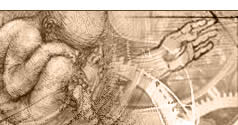 |
 |
 |
 |
 |
 |
 |
 |
|
 |
 |
 |
75 Unnecessary beauty
|
| Menu | back |
The unnecessary beauty occurring in nature is an important criterion for intelligent creation. The naturalistic approach fails to explain the development of unnecessary beauty. Natural selection would favour exclusively practical mutations providing a survival advantage in some manner. Unnecessary beauty would not be favoured or selected according to evolution theory.
There are animals and plants which are unspeakably beautiful (according to human standards) and which appear not to have any advantage in comparison to inconspicuous types of the same species with simple appearance. In his work The Origin of The Species, Charles Darwin wrote that it would be a hard shock for his theory if many organic structures were beautiful only to delight the observer (1). Simply being beautiful would not provide any advantage for evolution. Darwin was aware of this.
Naturally, a great deal of beauty in nature can be explained in connection with the reproduction behavior of living creatures. In many cases, it does, in fact, appear to have no specific purpose.
Structures are present apparently only for the sake of beauty.
It would not be necessary for many flowers to be anywhere near as beautiful as we know them. In the vast majority of cases, it would be sufficient to simply produce flower petals with the right colour to attract bees and other insects. Bees do not have eyes like those of humans. The beauty of most flowers, especially orchids, does in fact appear to have no specific purpose.
|
 |
|
 |
| Peacock (1) |
|
Peacock (2) |
The impressive peacocks tail with its unnecessary splendour or the wonderful pattern and colours of butterflys wings are probably not practical; they could even be disadvantageous.
Aeolids are tiny snails that can be observed only with a strong magnifying glass. These snails have an elaborate pattern with vivid colours, even though they themselves do not have eyes to perceive an image. Biologist Adolf Portmann wrote in this regard, With these colourful snails, we see, as in numerous other cases, complex development processes for visual imagery which cannot be associated with any perceptive organ at all and still appear to be formed for sight in terms of colour and shape (2).
Unnecessary beauty implies an observing, super-ordinate intelligence that not only pays attention to detail and purpose format, but also considers the creature as a whole and places values on harmony and beauty. The same is true for programming the DNA. Inventing intelligent information of the kind written into the DNA is possible only for an intelligent creator.
Information theory | Menu |
back
|
References:
|
| (1) |
Digitale Bibliothek Band 2: Philosophy: Charles Darwin, Die Entstehung der Arten, page 423. |
| (2) |
Adolf Portmann, Meerestiere und ihre Geheimnisse, Reinhardt-Verlag, Basel, 1958, page 73. | |
| |
Image "Peacock (1)" http://www.animalpicturegallery.net/animal_picture_peacock_Laur.htm
Image "Peacock (2)" http://0.tqn.com/d/pittsburgh/1/0/w/Q/peacock.jpg |
| |
Comment this Site!
|
 |
 |
 |
 |
|

